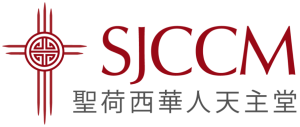Concomitance and Return of the Precious Blood
经Dcn Ray Gans -The Holy Family Catholic, SJ 许可由Dcn Simon翻译如下:
“伴随/并存”(Concomitance)是天主教的教义中宣称耶稣完全存在于每一个圣体圣事中的元素 (element)-即圣体和圣血。这意味着当我们领受圣体或喝杯爵中的圣血时,我们体验到的是全部整体的耶稣基督。
这教义的理论根据在于耶稣基督是看不见的天主,他的肉体不能与血或灵魂分离。当我们参与圣体圣事时,我们食用了基督的荣耀身体──他的身体、血、灵魂和神性,是我们的天主和救主的实质。
耶稣在若望福音中告诉我们:「凡吃我的肉、喝我的血的,就得永生;在末日我要叫他復活。」在最后的晚餐中,我们在玛窦福音中读到:「他们正吃的时候,耶稣拿起饼来,祝福了,擘开,递给门徒,说:『你们大家拿去吃,这就是我的身体。』」然后,他拿起杯来,感谢后递给他们,说:「你们大家拿去喝,这是我的血,新而永久的盟约之血, 将为众人倾流,以赦免罪恶。」
耶稣要我们两样都要领受。当我们在弥撒中领受感恩祭的两种元素时,我们以与门徒在最后的晚餐中所做的相同方式分享耶稣的体和血。换句话说,透过领受圣体圣血,我们更完全地参与了感恩祭的奥秘。面饼和杯爵中的酒都是可以触摸得到的东西,是基督真实临在的标志。虽然一同领受两种元素-耶稣的体和血,并不是绝对必需的或必要的,但却是最完美的方式。
教会长久以来接受了圣体圣血「同在并存」的教义,可能从一开始就有。然而,在最初的一千年左右,这并不是个大问题,因为所有的基督徒都在弥撒中领受了耶稣的圣体和圣血的两种形式。然而,随着时间的推移,普通信徒领受圣体时从饮用圣血的做法开始减少(因担心圣血洒出和其他问题),到了15世纪,耶稣的圣血被限制为仅限于神职人员领受。教会的法规在60年前才经过修订,允许地方主教让信徒在他们所属的教区领受基督的宝血。
我们完全理解许多人可能对大家共饮同一杯爵的圣血有健康上的忧虑,而有些人的确比其他人有更大的风险,更容易受到感染(无论病源为何)。这里想要特别说明的是,领受圣血完全是个人的选择,千万不要有非得去领圣血的感觉,但只要我们做好合理的预防措施(如清洁双手,在领圣血之间擦拭干净杯爵的边缘等),在这个时候领受基督圣血,应该是相当安全的。因此,为了让教友们更充分地参与领受这圣体圣事,我们的主教Cantu已放宽之前对于领受圣血的的限制,鼓励教友们在弥撒中同时领圣体圣血。(Bishop Cantu’s letter )
即便如此,就像戴口罩一样,你和你的家人的健康是你的选择和责任。如果你对于领受圣血仍然感到不安全,那是可以理解的,但请你在领受圣体之后,以鞠躬的方式表达对基督圣血的尊敬。无论我们是否选择领受它,基督圣血仍然是世上最珍贵的饮料。
Dcn Ray Gans from The Holy Family Catholic church in San Jose wrote this article appeared in the 7/9/2023 Bulletin.
Concomitance is the Catholic doctrine that says Jesus is fully present under each Eucharistic species, i.e., the host and the precious blood. This means that when we consume either the host or sip from the cup, we experience all of Jesus.
The justification behind this doctrine is that Jesus Christ is God is invisible; his flesh cannot be separated from his blood or his soul. When we partake in the Eucharist, we consume christ’s glorified body – his body, blood soul, and divinity, the substance of all of our Lord and Savior.
Jesus tells us in John’s Gospel “whoever eats my flesh and drinks my blood has eternal life and I will raise him on the last day.” At the last supper we read in Matthew’s gospel “ While they were eating, Jesus took bread, said the blessing, broke it and giving to his disciples said “ Take and eat; this is my body.” Then he took a cup, gave thanks, and gave it to them saying “drink from it , all of you, fir this is my blood of the covenant, which will be shed on behalf of many for the forgiveness of sins. “
Jesus asked us to do both. When we consume both species of the Eucharist at Mass, we enter into this same act of eating and drinking Jesus body and blood as the disciples did at the Last Supper. In other words, by receiving host and cup we participate more fully in the divine mystery of the Eucharist. Both hosts and cup are touchable materials, signs of the real presence of Christ, and while it is not required or essential to receive Jesus under both species, it is the most perfect form of doing so.
The church has accepted the doctrine of concomitance for a long time probably from the beginning. But for the first thousand years or so it wasn’t much of an issue because all Christians received the body and blood of Jesus in both forms at Mass. Over time, however the practice of receiving Holy Communion on the cup by the faithful begin to drop off (due to fears of spillage and other issues ) and by the 15th century the Precious Blood was restricted to the clergy. Church’s laws were revised only 60 years ago to let Bishops return the cup of Christ’s blood to the Faithful in their dioceses.
It is understood that many people may have health concerns about sharing from a common cup, and some people are more at risk (for any source) than others. To be very clear, receiving from the cup is completely optional and no one should feel pressured into doing so, however as long as sensible precautions are in place (sanitizing hands, wiping the rim of the cup between recipients, etc. ), then receiving the Precious Blood should be reasonably safe at this time. And so, to allow the faithful to participate more fully in the reception of this sacrament, our bishop has relaxed his prior restriction on receiving from the cup.
Even so, as with masks, your personal health and that of your family is your choice and responsibility. If you feel uncomfortable sipping from this cup, that is OK, but please reverence Christ’s Precious Blood with a bow as you pass by when receiving Holy Communion, whether we choose to receive it or not, it is still the most precious drink on earth.
